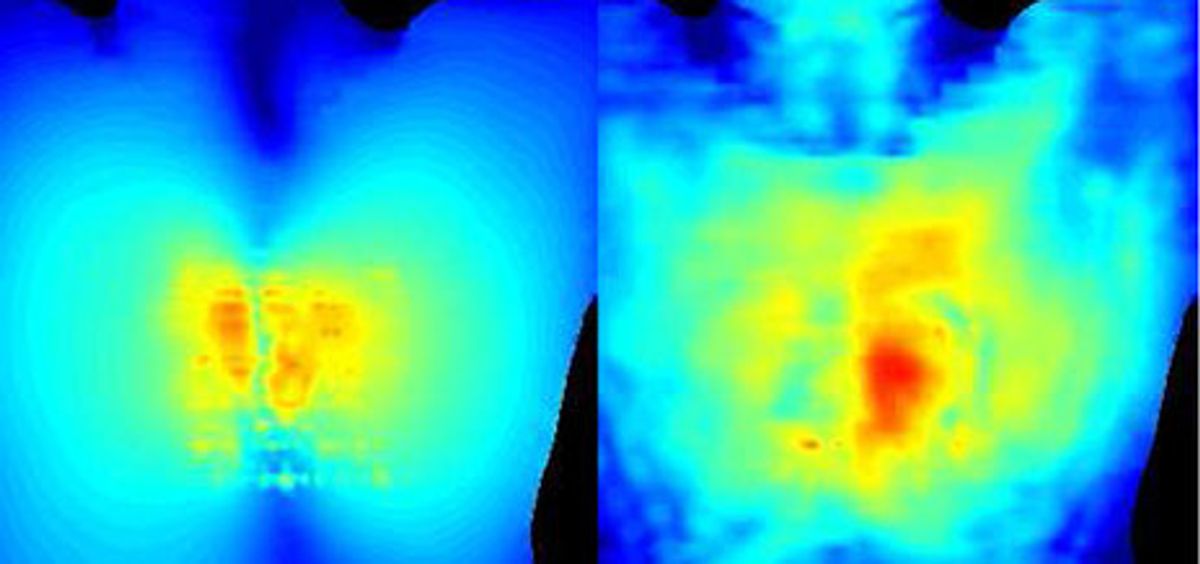How many pacemakers can fit on the head of a pin? Just one. But that's pretty impressive if you think about it.
At Stanford University, a team of researchers has built a tiny, implantable cardiac device that measured less than a millimeter in radius. This proof-of-concept device (which didn't actually set the pace for the contraction of living heart muscles) could be so small because it didn't require batteries—instead, it was powered by radio waves transmitted from outside the body.
Lead researcher Ada Poon, an assistant professor of electrical engineering at Stanford, thinks that wireless power transfer could lead to smaller and more precise implantable medical devices, as well as swallow-able devices. For cardiac devices, wireless power could offer big improvements over pacemakers powered by bulky batteries that need to be replaced periodically via surgery.
Poon's device, described in a paper published in the journal Applied Physics Letters, has an external transmitter that sends radio waves to a coil inside the body, creating enough current to power the tiny implant.
Her big advance was in figuring out what frequency of radio waves to use. Previously, researchers thought that only low-frequency radio waves could travel far enough through human tissue to power an implanted device, but these low-frequency waves required large, impractical coils. Poon's team discovered that high-frequency radio waves, which require only a very small coil, could travel much deeper into the body than anyone realized. The image above shows power delivery to a human heart via low-frequency (left) and high-frequency (right) transmitters.
Poon's been a busy researcher. We last covered her work in February, when she unveiled a tiny chip that could, theoretically, be propelled and steered through the human body using external magnetic fields. Poon said that chip was suitable for the human digestive tract and larger blood vessels, and could lead to devices for drug delivery and diagnostic imaging.
Image: John Ho, Stanford Engineering
Eliza Strickland is a senior editor at IEEE Spectrum, where she covers AI, biomedical engineering, and other topics. She holds a master’s degree in journalism from Columbia University.




